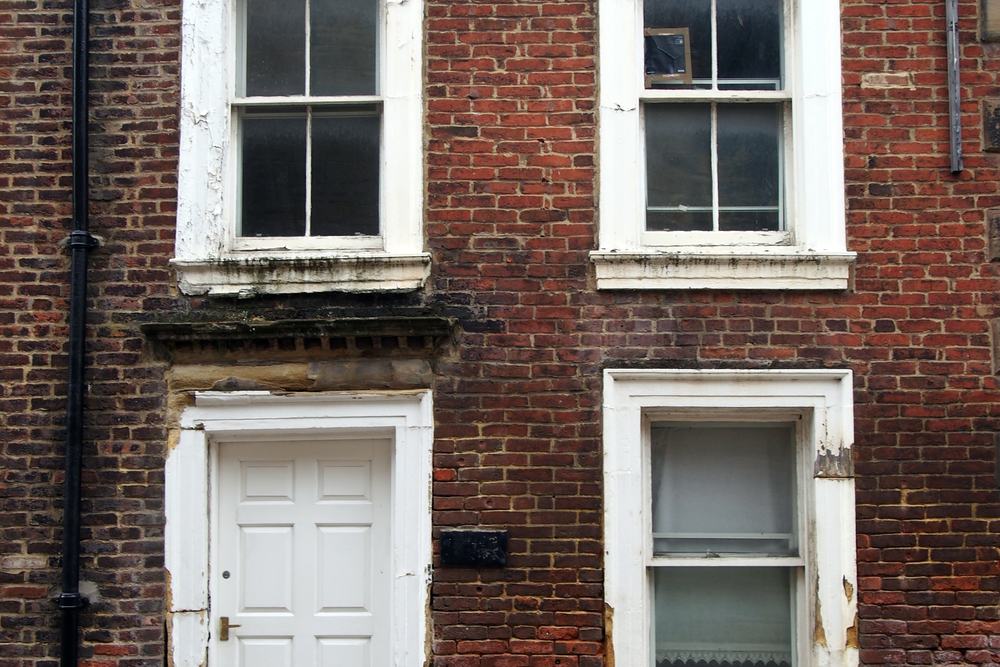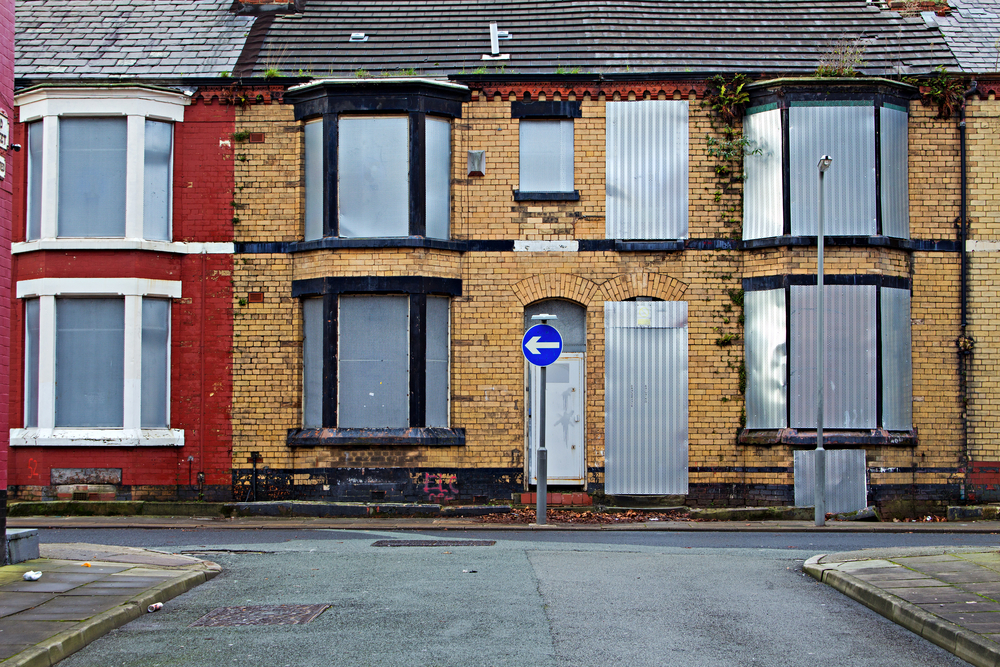
by Kim Pidgeon | Nov 15, 2023 | News
Report shows increase in all types of empty homes since the pandemic
The number of long-term empty homes has increased nationally by nearly 10 per cent since 2018, according to a new report commissioned by the Local Government Association (LGA) and the Empty Homes Network.
The increase – of nearly 60,000 homes since 2018 – is the equivalent of just over one per cent of the country’s housing stock.
The findings, which come at a time of critical housing need, reveal that the numbers across all definitions, types and tenures of empty homes have risen steadily since the pandemic and have largely exceeded the figures seen in 2018.
More than one million properties across England in 2022 were unoccupied, 4.01 per cent of all dwellings.
The rise comes despite the introduction of an empty homes premium in 2013, aimed at encouraging owners to bring empty properties back into use.
The report states many of the empty homes are yet to have reached a stage of deterioration that prompts concern or encourages decline but every empty home removes a property from the housing market.
The rise comes amid the wider background of frozen Local Housing Allowance (LHA) rates, the rising cost of living, the closure of Afghan bridging hotels, wider asylum and resettlement pressures, and an insufficient supply of affordable housing – all driving increases in homelessness and reducing councils’ ability to source suitable accommodation.
The data shows there are currently more than one million people on council housing waiting lists and 104,000 households living in temporary accommodation.
Councillor Darren Rodwell, housing spokesperson for the LGA said: “At a time when we face a chronic housing shortage across the country it is wrong for so many homes to be left empty.
“Councils work hard to address the issue, but the existing measures are clearly falling short. This report, and the best practice proposals and recommendations within it, aim to support councils in their efforts to reduce the numbers of empty homes, increase housing supply, encourage inward investment, and provide a better quality of life for residents and neighbours affected by the issues empty homes cause.
“Councils share a collective national ambition to tackle local housing challenges. The Government should also support this ambition by using the Autumn Statement to implement our six-point action plan so that councils can resume their historic role as a major builder of affordable homes.”
Adam Cliff, secretary and policy lead for the Empty Homes Network, said: “Empty Homes are a hugely wasted resource, and at over one million empty homes nationally, this figure represents the equivalent to the number of total dwellings in the city of Manchester.
“At a time where the demand for housing is so high, working to bring empty homes back into use can not only support meeting this need, but can encourage inward investment, improve communities and enhance the lives of those who currently live near empty homes.
“This report aims to set a standard from which councils can build a solid foundation to deal with empty homes, and provides practical and evidence based ideas which will undoubtedly prove useful to councils and their officers.
“While the numbers across all empty homes categories have shown an increase over the past five years, the report aims to address this by equipping councils and officers with tools to assist in data cleansing, case progression and the overarching empty homes journey through the case progression flowchart.”
Empty homes are divided into five categories: less than six months empty, long-term empty, empty homes premium, second homes and unoccupied. By definition, an empty home is one that has no permanent occupier or can be defined as a property where the main resident lives elsewhere.
As a standard practice, empty homes that have remained unoccupied for over six months from the moment of being informed by the owner are labelled as long-term empty.
Given their category, these are the most likely to warrant concern and/or investigation by the council.

by Simon Fitzsimmons | Apr 22, 2022 | News
A three-year long-term empty homes programme has had revenue funding approved by councillors at a cabinet meeting of East Suffolk Council.
The initiative is being designed to bring residential properties that have been empty for at least two years back into use. In East Suffolk, currently 280 properties in private ownership fall into that category.
These will be prioritised for action according to type, location, duration unoccupied, and housing need in the surrounding area.
The new programme forms part of the council’s initiatives for tackling the long-term empty homes issue in the area. There has also been a proposal to appoint a dedicated Empty Homes Officer to drive policy.
The programme will be designed to bring homes back into use via a variety of options.
Councillor Richard Kerry, East Suffolk Council cabinet member with responsibility for housing, said: “Empty homes are a wasted resource and can cause blight on neighbourhoods, attracting anti-social behaviour, vandalism and fly-tipping.
“We recognise the value of bringing an empty home back into the housing stock. The result can be a modernised, more energy efficient home, utilising fewer resources than a new build.
“We also realise that solutions need to be tailored to each case and owner, often requiring time to explore all options.
“As a local authority, we can play a key role in opening up the opportunity for investment and restoration where it may have stalled.
“Costs of all actions and their impact on overall long-term empty homes will be kept under review, and the programme revised and tailored to maximise effectiveness.”
Examples of empty homes becoming part of the Council’s own stock, to provide affordable accommodation and much needed regeneration, include 560 London Road, Lowestoft, converted into a House in Multiple Occupation, and 98 Park Road, Lowestoft, now occupied as a five-bed council house.
Funding to support the development of a long-term empty homes programme is available from reserves created from the New Homes Bonus (NHB) claimed by East Suffolk Council from central government in recent years.
The revenue cost of the service is estimated at £281,958 for three years.
Property purchases would initially use the reserve as a source of funding, with capital receipts providing a replenishment when properties are sold.
There are approximately 117,000 homes in East Suffolk. The number of long-term empty homes represents less than 0.25%. Despite the low percentage, a survey carried out on behalf of the charity Empty Homes, in October 2016, found that 76% of adults surveyed believed their local authority should place a higher priority on tackling empty homes.

by Kim Pidgeon | Sep 28, 2019 | News
New research from Action on Empty Homes reveals the fastest rise in the number of long-term empty homes in England since the recession.
An additional 10,983 homes were left empty in 2018 – an increase of 5.3 per cent, which is more than double the 2.6 per cent rise seen in the previous year. The new figures mark the second consecutive year with a substantial increase in the amount of long-term empty homes, reversing the previous trend of steady declines seen since 2008.
Across England there are now more than 216,000 long-term empty homes, equivalent to 72 per cent of the government’s annual new homes target.
The report shows empty homes occur in all Council Tax bands but are particularly prevalent in the highest band (Band H) and in the lowest band (Band A). It also reveals the increase in long-term empty homes is not limited to one area of England.
Two thirds of the country’s 326 local authorities are experiencing a year-on-year uplift. More than a third of local authorities are seeing uplifts greater than 10 per cent; while more than one in ten is witnessing an increase of 30 per cent or more. Five local authorities including Portsmouth, Southwark and Hartlepool have all seen surges of more than 50 per cent.
The analysis says the increase in empty homes is being driven by the end of the Coalition Government’s Empty Homes Programme, which finished in 2015. It had used several targeted funds to invest £216 million in bringing over 9,000 long-term empty homes back into use. The recent slowdown in the housing market is also a factor.
The report makes recommendations for tackling the issue, including a national investment programme targeted at areas with high levels of long-term empty homes; re-establishing dedicated funding programmes to support local authorities and housing providers to create affordable housing from long-term empty homes in all parts of England; and supporting community-based regeneration approaches.
Reducing the number of empty homes also has huge cross-party parliamentary support. A ComRes poll of MPs commissioned by Action on Empty Homes shows that 72 per cent of MPs polled rank action on empty homes as one of their top two priorities for combating the current housing crisis. More than 80 per cent supported targeted funding for local authorities, charities and local organisations to buy, lease or refurbish empty homes.
Will McMahon, director of Action on Empty Homes, said: “With homeless numbers at their highest levels in over a decade, it makes no sense to leave hundreds of thousands of homes standing long-term empty. Like the housing crisis, empty homes are a national problem, two-thirds of councils have rising numbers. National problems need national solutions.
“The Government must provide a solution for every street in Britain. Significant investment is needed to turn around communities that have faced under-investment for decades, and all local councils need new powers to take action. England’s 216,000 empty homes are everyone’s problem and everyone’s opportunity. The time for action is now.”


